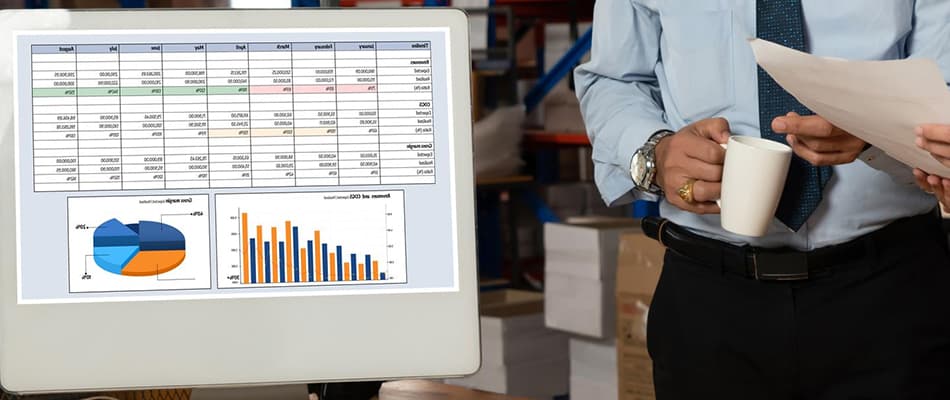Risk Management in Project Management: How to Safeguard Your Project’s Success
In project management, dealing with uncertainty is a common challenge. Risks such as tight deadlines, limited resources, or unexpected events can affect the success of any project. This is why risk management in project management is so important. It helps project managers identify, assess, and reduce risks to keep projects on track and achieve their goals. With a solid risk management plan, project managers can better prepare for challenges and make informed decisions to handle potential issues before they cause significant problems. Proper risk management is the key to ensuring a project’s progress and success.
In this article, you will learn what risk management in project management is and how it can protect your projects and ensure their success.
What is Risk Management in Project Management?
Risk management is a systematic process that helps project managers identify potential risks that could affect the outcome of a project. It involves analysing these risks, assessing their impact, and developing strategies to minimise or eliminate them. By integrating risk management into project management, project managers can create a proactive rather than reactive approach to risk. This strategy will ensure that they are prepared to handle challenges as they arise.
The core objectives of risk management in project management are as follows:
- Identifying Risks: Finding possible risks early on before they turn into problems.
- Assessing Risks: Checking how likely each risk is to happen and how much it could affect the project.
- Creating Mitigation Strategies: Making plans to reduce or manage the effects of these risks.
- Monitoring and Reviewing: Keeping an eye on risks and checking how well the risk management plans work throughout the project.
By understanding and implementing effective risk management practices, project managers can protect their projects and enhance their chances of success.
Learn How to Start a Career in Project Management Here!
Types of Risks in Project Management
In project management, risks can arise from various sources. Understanding the types of risks is crucial for effective risk management. The following are some common types of risks that you must know while studying risk management in project management:
- Technical Risks: These risks refer to issues that may arise from the technology or technical aspects of the project. For example, using unfamiliar technology might lead to delays or failures if the team needs help to handle it effectively.
- Financial Risks: They are related to the project’s budget. Unforeseen costs or a shortage of funding can affect the project’s success and make it challenging to complete it within budget.
- Scope Risks: Risks which occur when there are changes or uncertainties in the project’s scope. Expanding the project’s goals without increasing resources can result in significant obstacles.
- Time Risks: These risks involve delays that affect the project timeline. Resource availability, dependence on external factors, or unexpected issues can prevent the project from missing important deadlines.
- Quality Risks: They are related to the standard of the project’s deliverables. If the project fails to meet quality expectations, it can lead to additional work, higher costs, and unsatisfied stakeholders.
- Stakeholder Risks: These risks come from changes in stakeholder expectations or involvement. Miscommunication or lack of support from stakeholders can hinder the project’s progress and success.
- External Risks: They originate from factors outside the project, such as legal changes, economic issues, or natural disasters. Although these risks are beyond the team’s control, they must still be planned for in the risk management process.
Steps in the Risk Management Process
A clear and organised approach is important when carrying out risk management in project management. Below are the key steps involved in this process:
- Risk Identification: The first step is to identify all possible risks that could affect the project. This can be done through brainstorming sessions, talking with stakeholders, or looking at past project data. Tools like SWOT analysis (Strengths, Weaknesses, Opportunities, Threats) can help in this step.
- Risk Assessment: Once risks are identified, the next step is to assess how likely they are to happen and how they might impact the project. You can use simple methods like a risk matrix to rate risks by their severity or use more detailed calculations to estimate the financial impact.
- Risk Prioritisation: After assessing the risks, it is important to rank them based on how serious they are. High-impact and high-likelihood risks should be given the most attention, as they can cause the biggest problems in the project.
- Risk Mitigation Planning: For each important risk, you need to create a plan to reduce or handle it. This could involve avoiding the risk, sharing it ( through insurance), reducing its impact, or accepting it if the cost of managing the risk is too high.
- Implementation of Mitigation Strategies: Put the risk management plans into action. This may include assigning resources to handle risks, preparing backup plans, or keeping stakeholders informed to manage expectations.
- Monitoring and Reviewing: Risk management in project management is an ongoing task. You need to keep an eye on risks throughout the project. Regularly check and update the risk register to include any new risks or changes to existing ones.
- Documentation and Learning: Record the entire risk management process and the results. After the project ends, review how well risks were handled and note down any lessons learned for future projects.
Read Our Article Why Should I Study Project Management and explore its benefits.
Risk Management Tools and Techniques
In project management, risk management tools and techniques are essential for identifying, analysing, and mitigating potential threats that could affect project success. Practical tools enable project managers to predict potential issues, plan for uncertainties, and develop strategies to address risks before they become problems. By using specialised tools, teams can improve communication, prioritise resources, and manage risks in advance. Below are some of the most commonly used tools and techniques that support effective risk management in projects:
- Risk Register: This is a document that lists all identified risks, their assessment, and the steps to manage them. It serves as a key reference for the project team, keeping track of every risk and how it is being handled.
- Risk Matrix: This tool visually shows risks based on how likely they are to happen and their potential impact. It helps project managers prioritise which risks need attention first.
- SWOT Analysis: This is a method that looks at a project’s strengths, weaknesses, opportunities, and threats. It helps identify potential risks by considering both internal and external factors.
- Monte Carlo Simulation: This technique uses statistical methods to create different scenarios and predict how risks could affect the project. It helps in understanding possible outcomes more clearly.
- Fishbone Diagram: Also known as the Ishikawa diagram, this tool helps identify the causes of risks by grouping them into categories. It makes it easier to see where problems might come from.
- Expert Judgement: When learning risk management in project management, consulting experienced team members or external experts can offer valuable insights into possible risks and how to manage them effectively.
- Scenario Analysis: This technique involves creating different scenarios based on how likely and severe risks might be. It allows project managers to plan ahead for various possible situations.
How to Manage Risk as a Project Manager?
Managing risk effectively is an essential skill for any project manager. It involves strategic planning, monitoring, and adaptive strategies to address potential challenges that might impact a project’s timeline, budget, or quality. Here are some strategies to improve your risk management in project management:
- Build a Risk-Aware Culture: Create an environment where team members feel safe discussing risks. Encourage open communication and teamwork in identifying and addressing potential issues.
- Stay Informed: Keep up to date with industry trends and best practices in risk management. Being knowledgeable helps you spot potential risks before they affect your projects.
- Engage Stakeholders: Involve stakeholders in the risk management process. Their views and experiences can provide valuable information about possible risks and their effects.
- Utilise Technology: Use project management software and tools designed for risk management. These tools can make it easier to assess and monitor risks effectively.
- Regularly Review Risks: Plan regular meetings to review the risk register and evaluate how well your risk responses work. Be flexible and ready to adjust your strategies if necessary.
- Learn from Past Projects: Look back at previous projects to find lessons learned about managing risks. Use these insights to enhance your planning and execution in future projects.
Learn Project Management With Digital Regenesys
If you want to enhance your risk management skills in project management, consider enrolling in Digital Regenesys’s Project Management course. This online course provides you with essential tools and strategies to professionally manage project challenges. Some of the prominent reasons to learn project management with Digital Regenesys are as follows:
- The course covers essential concepts, tools, and techniques for effective project management, including risk management strategies.
- You will learn from industry professionals with extensive experience in project management.
- It focuses on real-world applications that help you tackle project challenges confidently.
- You can connect with peers and professionals in the field, expanding your network.
- After completion, you will gain a globally recognised certificate that enhances your career prospects in project management.
In conclusion, effective risk management in project management is vital for ensuring the success of any project. Project managers can protect their projects from possible issues by recognising the different types of risks, following a risk management process, and using suitable tools and techniques. Taking a proactive approach to risk management improves project results and builds stakeholder trust and satisfaction. As you start your career in project management, remember that anticipating and managing risks is a crucial part of executing a successful project.
To learn more about our project management course, please visit the Digital Regenesys website.
FAQs on Risk Management in Project Management
What is risk management in a project?
Risk management in a project involves identifying, evaluating, and planning for possible challenges that might affect the project. This allows project managers to address risks early, reducing their impact and helping the project stay on course.
What are the types of risks in project management?
Types of risks in project management include technical risks, financial risks, scope risks, time risks, quality risks, stakeholder risks, and external risks.
What is the definition of a risk in project management?
In project management, a risk is defined as an uncertain event or condition that, if it occurs, can positively or negatively affect a project’s objectives.
Why is risk management important in project management?
Risk management is important in project management because it helps avoid and resolve potential problems, allowing project managers to take proactive measures to mitigate risks and ensure the project stays on track and meets its goals.
What is a risk management plan?
A risk management plan outlines how risks will be identified, analysed, and responded to throughout the project. It includes risk mitigation strategies, roles and responsibilities, and monitoring procedures.














